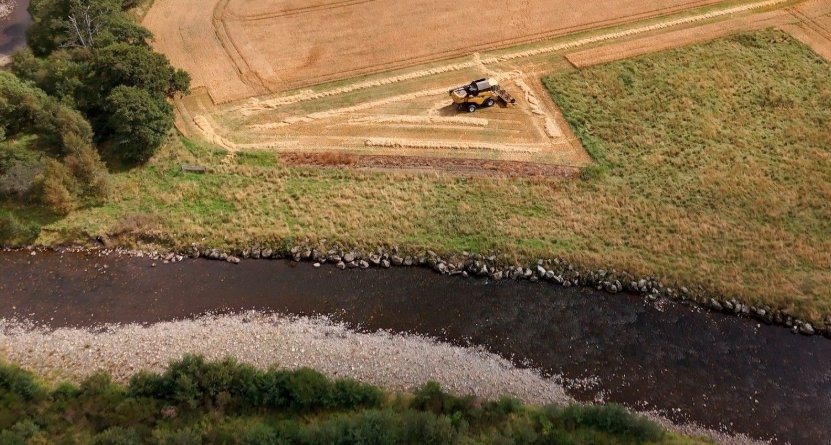Scotland is grappling with its worst water scarcity in years, as six eastern regions reach the highest alert level due to months of low rainfall and dry conditions. The Scottish Environment Protection Agency announced on August 29, 2025, that prolonged drought has left rivers at critically low levels, triggering restrictions on water use for farmers and businesses.
Current Water Scarcity Levels Across Scotland
The crisis has escalated quickly this week, with more areas moving into higher risk categories. Officials warn that without steady rain, the situation could worsen in the coming days.
Rainfall data shows the east has seen below-average precipitation every month in 2025, pushing rivers to historic lows. This marks the first time in 2025 that such widespread restrictions have been put in place.
Experts point to a mix of factors, including a dry winter and no snowmelt recharge, which usually helps rivers in spring.

Key Areas Facing Significant Scarcity
Six catchments now sit at Significant Scarcity, the top warning level. This forces temporary limits on how much water people can pull from rivers and groundwater.
These restrictions aim to protect the environment and ensure fair access for essential needs. Farmers in these zones face the biggest challenges, as they rely on water for crops and livestock.
Here is a breakdown of the affected areas and their status:
| Area | Scarcity Level | Date Escalated | Key Impacts |
|---|---|---|---|
| Upper Don | Significant | August 27, 2025 | Low river flows affecting farming and wildlife |
| Lower Don | Significant | August 27, 2025 | Restrictions on water abstraction for businesses |
| Lower Tweed | Significant | August 28, 2025 | Potential harm to fish populations and ecosystems |
| North Fife | Significant | Earlier this week | Limits on irrigation for agriculture |
| Ythan | Significant | Earlier this week | Reduced water for local communities and industry |
| Deveron | Significant | Earlier this week | Historic low levels since the 1970s |
Other regions remain under watch, with some at Moderate Scarcity or Alert stages.
Causes Behind the Drought Crisis
A dry autumn and winter in 2024 set the stage for this shortage, as rivers missed out on normal refills. The lack of snowfall meant no gradual melt to boost water levels in spring.
Every month this year has brought less rain than usual in the east, leaving groundwater depleted. While the west got some relief from summer storms, those benefits faded fast.
Climate patterns show Scotland is seeing more extreme weather, with drier spells becoming common. This ties into global trends where warming temperatures disrupt rain cycles.
Recent events, like isolated thunderstorms last week, offered little help. Forecasts predict showers on August 29 and heavier rain in the northeast on August 30, but experts doubt it will fix the deep-rooted issues.
Long-term data reveals that eastern Scotland has faced similar dry periods, but this year’s combination of factors makes it stand out.
Impacts on Communities and Economy
The scarcity hits hard on local economies, especially farming and related industries. Farmers report struggles to water crops, which could lead to lower yields and higher food prices.
Businesses like distilleries and golf courses also feel the pinch, as they depend on steady water supplies. Communities worry about broader effects on wildlife and river health.
Key challenges include:
- Reduced fish stocks in affected rivers, harming fishing industries.
- Potential for water rationing if conditions do not improve.
- Economic losses for sectors like agriculture and tourism.
Officials have worked with groups such as farmers’ unions and whisky makers to prepare for this. Direct talks over the summer aimed to soften the blow.
In one example, the River Deveron has dropped to levels not seen since the 1970s, raising alarms for long-term environmental damage.
Expert Views and Warnings
Agency leaders stress this is a critical time for water users. They have monitored the situation since May and reached out to those affected.
One official noted that restrictions should not surprise anyone, given the ongoing warnings. Teams are now in the field to help with compliance and answer questions.
They urge everyone to conserve water, even in less affected areas. Simple steps like shorter showers and fixing leaks can make a difference.
Looking ahead, sustained rain is key, but climate experts warn that Scotland may see more frequent shortages without better water management.
What Happens Next for Scotland’s Water Supply
Forecasts offer some hope with rain expected soon, but it might not be enough to reverse months of deficit. More areas could escalate if dry weather persists.
Long-term solutions include building better reservoirs and improving leak detection, lessons from past shortages in places like England.
Officials will keep tracking river levels and adjust restrictions as needed. The focus remains on balancing human needs with environmental protection.
Share your thoughts on how this water crisis affects you, and spread the word to raise awareness about conservation efforts.


















